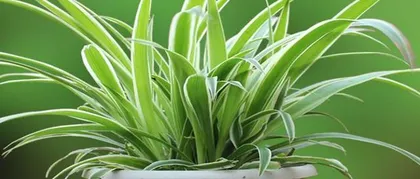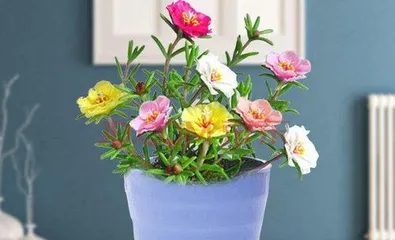Winter is a period of poor growth for outdoor potted flowers, but proper care and management can help them survive the cold winter. Here are some tips for the care and management of outdoor potted flowers in winter.

Choose the right potting soil
The right potting soil ensures healthy plant growth. Using loose, breathable, and moisture-retentive soil in winter can increase the water absorption capacity of the roots.
Pay attention to watering time and amount
Winter temperatures are low, and water evaporates slowly. Overwatering can easily lead to root rot. Generally, outdoor potted flowers should be watered every 3-4 days, with an appropriate amount of water each time.

Pay attention to insulation
Insulation measures can ensure normal plant growth in low-temperature environments. You can add insulating materials around the pot, such as foam boards or hemp rope, to protect the plants from the cold.
Control the duration of light exposure
The light exposure time for outdoor potted flowers should be less than 10 hours to avoid affecting their normal growth due to prolonged nighttime lighting.
Pay attention to ventilation
Outdoor potted flowers in winter need proper ventilation to promote metabolism, enhance immunity, and prevent pests and diseases.

Fertilize regularly
Fertilize moderately in winter. You can use nutrients such as organic fertilizers and potassium dihydrogen phosphate to increase the nutrient supply for the plants.
Clean up fallen leaves promptly
Fallen leaves accumulating in the potting soil can easily breed bacteria and lead to pests and diseases. Cleaning them up promptly can prevent this.
Pay attention to wind protection
The cold winter wind is strong and can easily break or topple potted flowers. When choosing a location for the pots, avoid windy spots and high buildings.
Prune at the right time
Appropriate pruning in winter can control the plant's growth, promote the growth of new shoots, and improve the overall quality of the plant.
Prevent excessive dryness
The low air humidity in winter can easily cause potted flowers to become too dry. You can increase the air humidity artificially by methods such as spraying water.
Prevent pests and diseases
Pests and diseases are relatively rare in winter, but timely prevention and treatment are still necessary. You can use organic insecticides and agricultural sulfur powder for treatment.
Pay attention to the distance between plants
The distance between potted flowers should be kept appropriate to avoid crowding and affecting each other's normal growth.
Avoid excessive fertilization
Fertilization in winter should be moderate; excessive fertilization can lead to lush growth but a decline in quality.
Pay attention to the quality of irrigation water
The quality of irrigation water must be clean and hygienic. Do not use water sources containing harmful substances, such as water with chlorine or heavy metals.
Strengthen monitoring
Plant growth is slow in winter, which can easily lead to diseases. It is necessary to strengthen monitoring to detect and address problems in a timely manner.
By following the care and management techniques mentioned above, outdoor potted flowers can grow vigorously in winter. At the same time, it is necessary to adapt and adjust reasonably, and constantly explore the most suitable care methods for your own plants.